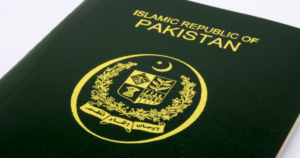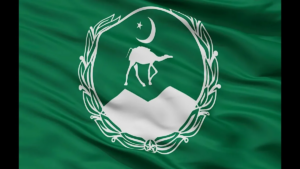
The persistent gender divide in financial inclusion across Pakistan has once again come under sharp focus, as the latest Karandaaz Financial Inclusion Survey reveals alarming disparities in access to financial services between men and women.
According to the report, while overall access to formal financial services has gradually improved—with 35% of Pakistanis now using banks, mobile wallets, or non-bank financial institutions—the gap between male and female participation remains staggering and deeply entrenched.
Only 14% of Pakistani women reportedly own a financial account, compared to 56% of men, underscoring a profound structural and socio-cultural imbalance that continues to shape the country’s financial landscape.
The data presents a sobering reality: millions of women remain excluded from the formal economy, cut off from basic tools like savings accounts, mobile wallets, or credit services that are essential for personal empowerment, family welfare, and broader economic development.
Financial exclusion: The gendered divide
The stark difference in financial account ownership between men and women reflects not only deep-rooted cultural norms but also systemic challenges around accessibility, digital literacy, and technological infrastructure.
While male account ownership has seen incremental growth in recent years, women’s participation in formal financial services has largely stagnated, highlighting an inclusion crisis that could have far-reaching consequences for economic growth and poverty reduction.
The 14% figure for women’s account ownership is not merely a statistic—it symbolises the barriers millions of women face when attempting to engage with Pakistan’s financial system.
From rural areas where banking infrastructure is scarce to urban centres where socio-economic barriers persist, the financial exclusion of women is woven into the fabric of daily life.
In contrast, 56% of Pakistani men having access to financial services represents not only greater economic autonomy but enhanced opportunities for savings, investment, and participation in entrepreneurial activities.
This disparity ultimately reinforces gender inequalities, limits women’s financial independence, and constrains the potential for household and national economic progress.
Mobile access: A new frontier, yet to be conquered
Mobile technology has been heralded globally as a key driver of financial inclusion, offering affordable, accessible alternatives to traditional banking for underserved populations.
However, Pakistan’s mobile ownership and usage trends reveal that technology’s potential as an equaliser remains largely unrealised for women.
The Karandaaz survey points to a substantial mobile ownership gap that further compounds the financial exclusion of women.
With mobile phone ownership being a critical gateway to digital wallets, mobile banking apps, and financial information, the lack of access to mobile devices among women limits their ability to engage with even the most basic financial tools.
This mobile divide, coupled with low digital literacy rates among women and societal restrictions on mobility and technology use, has created a perfect storm of exclusion.
While mobile financial services are expanding rapidly among male users, women are often left behind, widening the very gaps that digital platforms were meant to close.
The broader economic implications
Pakistan’s ambition to foster inclusive economic growth, reduce poverty, and promote entrepreneurship cannot be fully realised if half the population remains marginalised from the formal financial system.
The exclusion of women from banking, savings, and credit not only limits their personal economic empowerment but also constrains the nation’s overall financial health.
Studies consistently show that when women have access to financial services, they are more likely to invest in their families’ health, education, and well-being, leading to improved social outcomes and stronger communities.
Furthermore, women’s economic participation has a multiplier effect, driving innovation, productivity, and resilience at both the household and national levels.
With only 14% of women owning financial accounts, Pakistan risks missing out on this vital economic potential.
The gender gap in financial access does not exist in isolation—it intersects with other socio-economic challenges, including gender disparities in education, healthcare, employment, and property rights.
Together, these factors create a cycle of exclusion that inhibits women’s progress and stifles the nation’s development trajectory.
Financial inclusion as a catalyst for national progress
The economic and social benefits of greater financial inclusion for women are well-documented.
Empowering women with access to formal financial services enhances their ability to manage risks, invest in small businesses, contribute to household income, and plan for the future.
In turn, this drives broader development goals such as poverty reduction, gender equality, and economic resilience.
Countries across the globe have leveraged financial inclusion to unlock women’s economic potential, with remarkable success stories emerging from regions as diverse as East Africa, Southeast Asia, and South America.
Pakistan, with its youthful population, expanding digital infrastructure, and vibrant entrepreneurial spirit, holds similar potential.
The path forward hinges on building an enabling environment where technology, policy, and social norms converge to promote financial access for all—regardless of gender.
While the current figures highlight the scale of the challenge, they also illuminate the transformative opportunity that lies in bridging the gender gap in financial inclusion. The Karandaaz report serves as both a wake-up call and a catalyst, reminding stakeholders across government, industry, and civil society that inclusive financial growth is not only possible—it is essential for the nation’s future.






